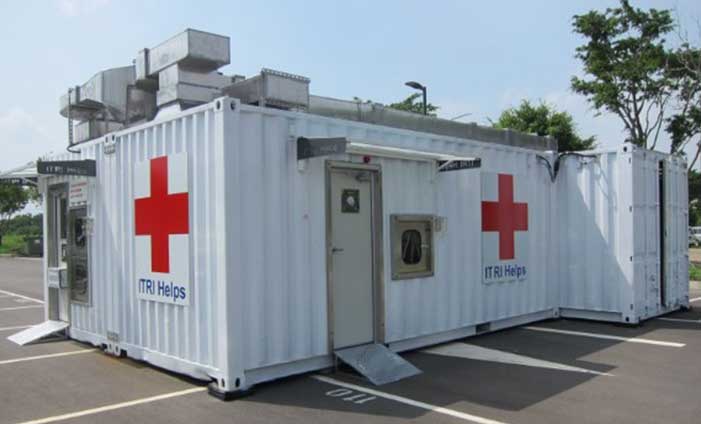In an era marked by increasing natural disasters, the need for effective disaster preparedness has never been more critical. One innovative solution gaining traction is the use of shipping containers. Traditionally used for transportation and storage, these robust metal structures are being repurposed into versatile, durable, and cost-effective emergency shelters and supply hubs. Shipping containers are portable, durable and can be easily transported making them a good option for providing immediate relief in disaster-stricken areas. In this blog, we explore how shipping containers are revolutionizing disaster preparedness, offering a lifeline when it’s needed most.

The Strength and Durability of Shipping Containers
Shipping containers are designed to withstand the harsh conditions of sea travel, making them incredibly strong and durable. This robustness is a key factor in their suitability for disaster preparedness. When natural disasters strike, structures often suffer significant damage, but shipping containers can endure high winds and heavy rains, providing a reliable and secure option for emergency shelters and storage.
Versatility and Adaptability
One of the greatest advantages of shipping containers is their versatility. They can be easily modified and adapted for a variety of uses in disaster scenarios. Containers can be converted into temporary housing, medical clinics, command centers, and storage units for essential supplies. This adaptability ensures that shipping containers can meet a wide range of needs in the aftermath of a disaster.
Portability and Accessibility
Shipping containers are designed for easy transport, making them an ideal solution for rapid deployment in disaster-stricken areas. They can be transported by ship, train, or truck to almost any location, even in remote or difficult-to-reach areas. Once on-site, they can be quickly set up and put to use, providing immediate support where it’s needed most.
Cost-Effectiveness
In comparison to traditional construction, repurposing shipping containers is a cost-effective solution for disaster recovery. The containers themselves are relatively inexpensive, and the modifications required to convert them into usable spaces are often much cheaper and faster than building new structures from scratch. This cost-effectiveness makes it feasible to maintain a stockpile of ready-to-use containers for rapid deployment in emergencies.
Eco-Friendly Solution
Using shipping containers for disaster readiness also has environmental benefits. Repurposing these containers reduces waste and the need for new construction materials, making it a more sustainable option. Additionally, containers can be equipped with solar panels and other eco-friendly technologies, further reducing their environmental impact.
Ready to purchase a shipping container? Reach out today to get a quote from the best in the industry!
Conclusion
As we face the growing threat of natural disasters, innovative solutions like repurposing shipping containers are essential for improving disaster preparedness and response. Their strength, versatility, portability, cost-effectiveness, and environmental benefits make them an invaluable resource in times of crisis. By incorporating shipping containers into disaster readiness plans, we can ensure a more resilient and prepared society, capable of responding swiftly and effectively to any disaster that comes our way.
If you need a quote on a New or Used Shipping Container, Call Container Sales Group at 708 639-4783.
